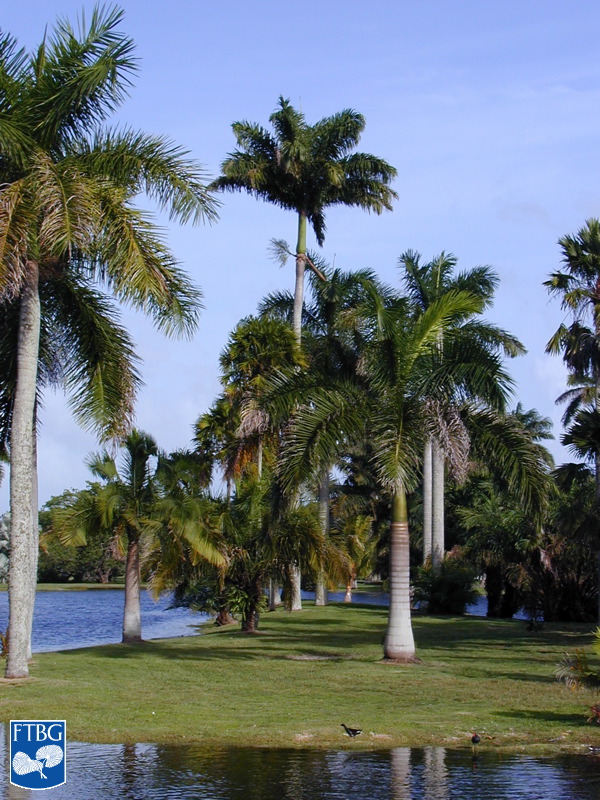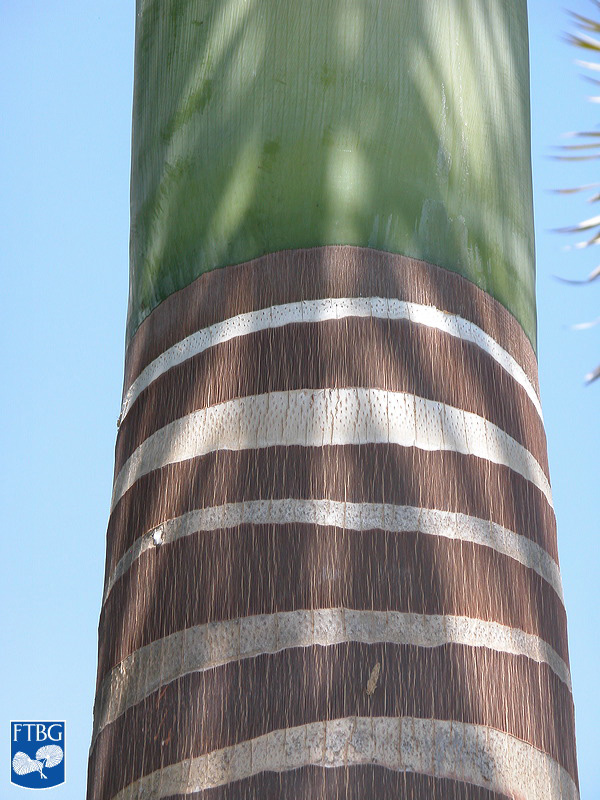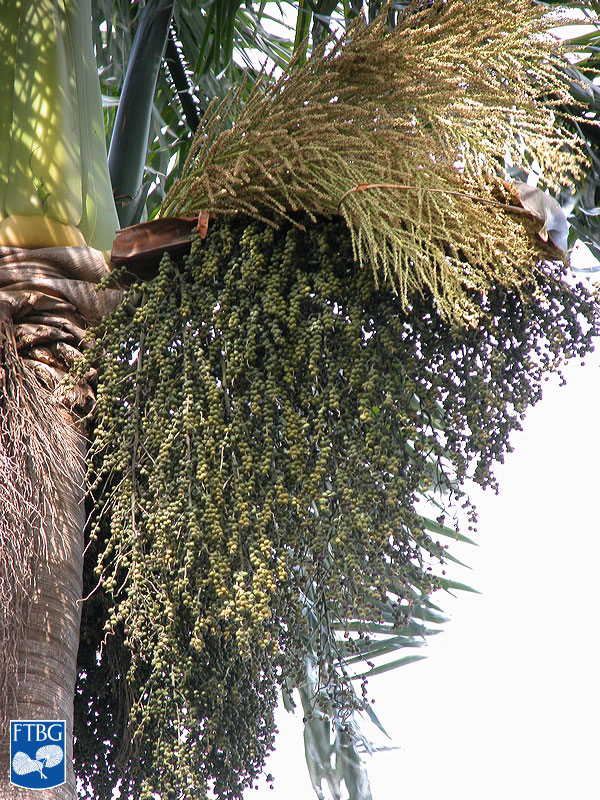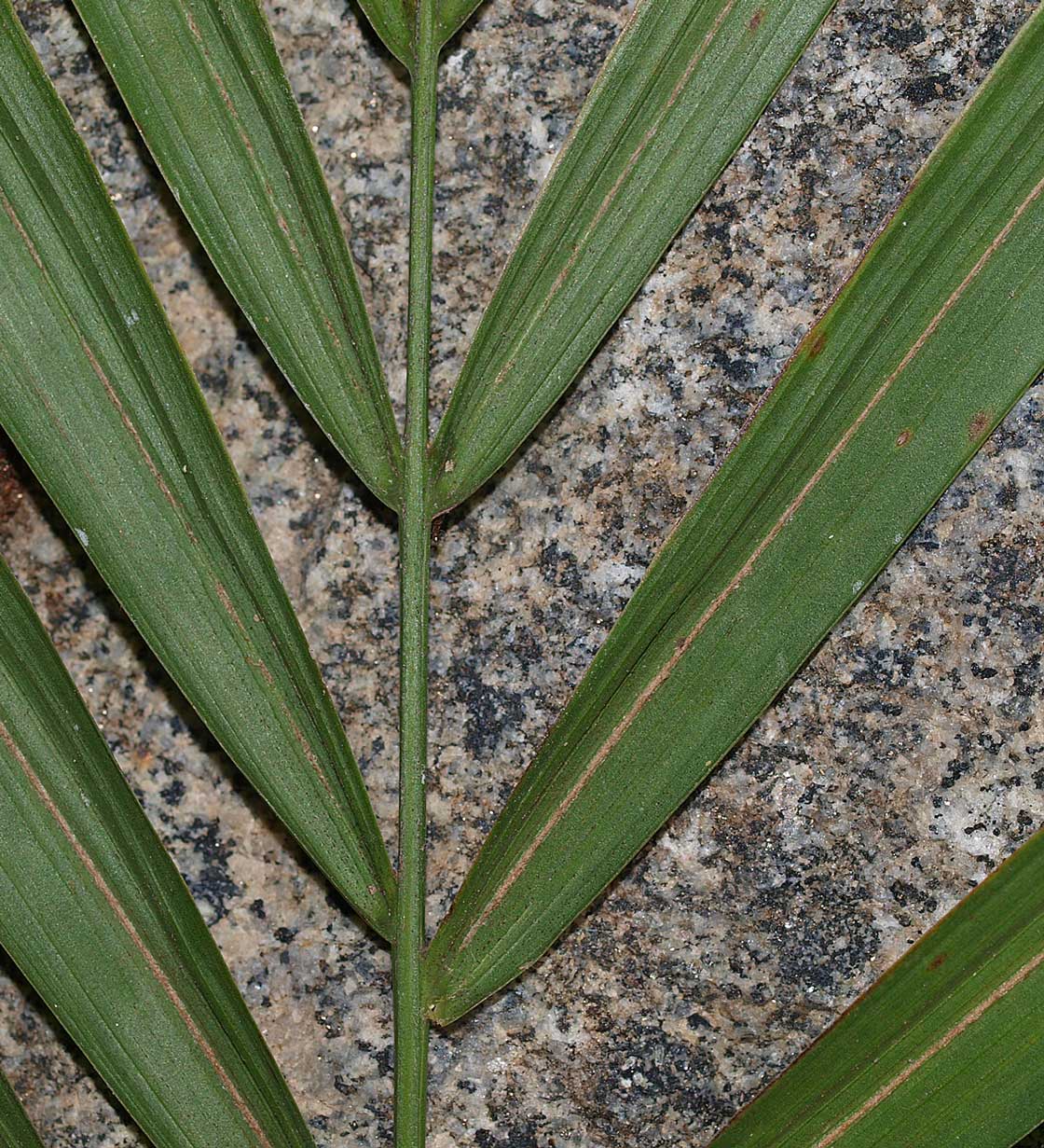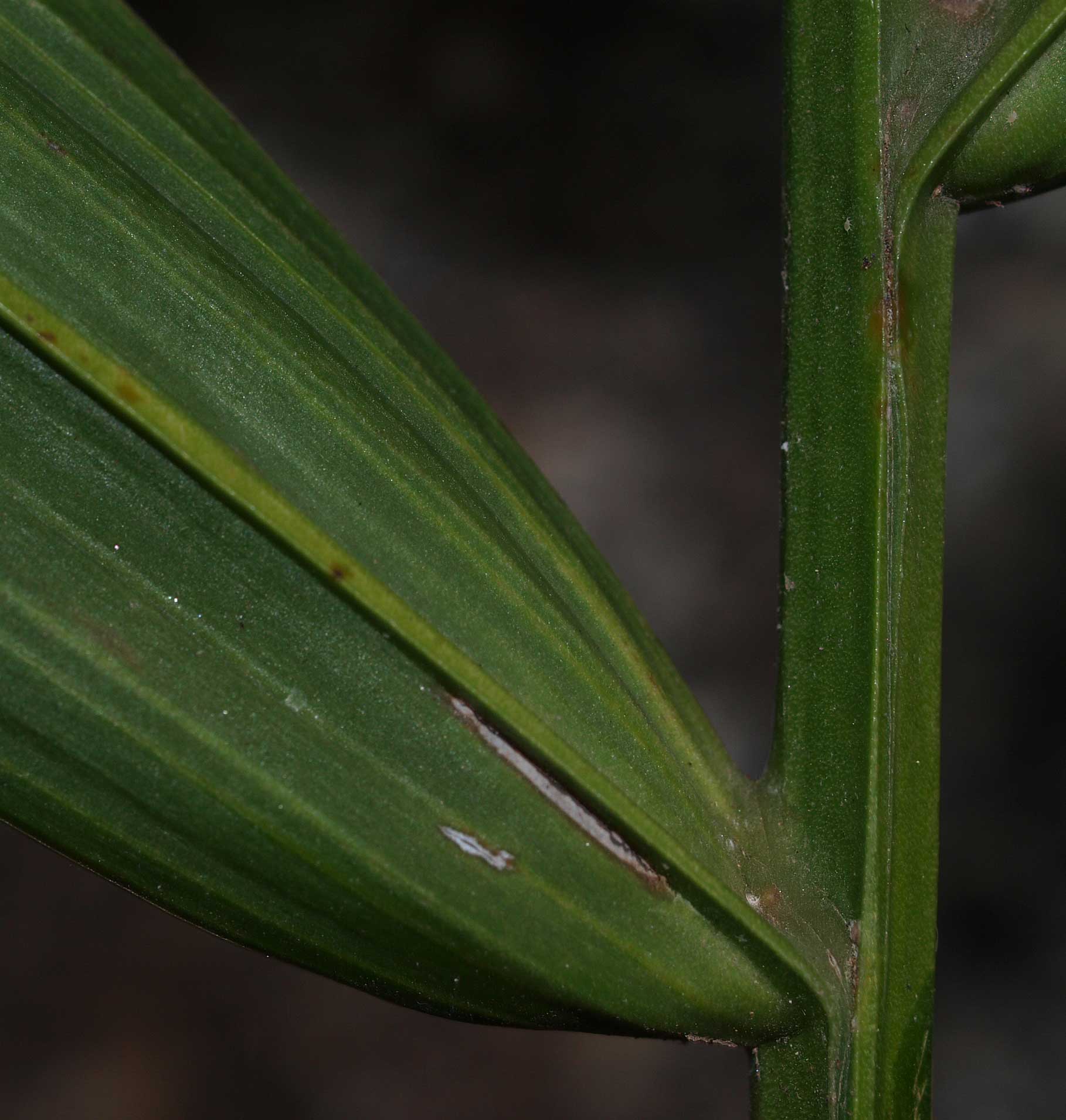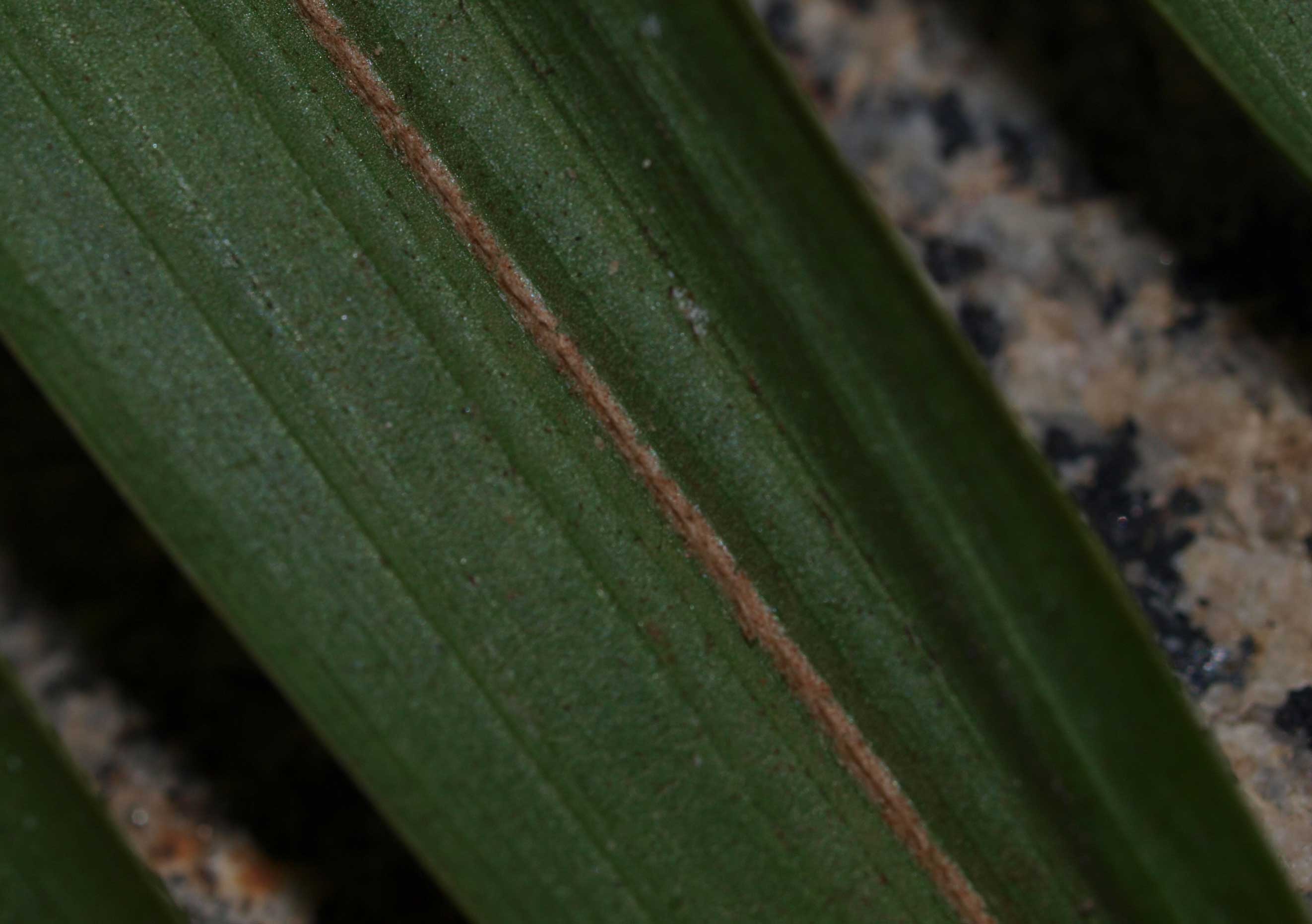Roystonea oleracea
|
Roystonea oleracea. Photograph courtesy of Fairchild Tropical Botanical Garden, Guide to Palms http://palmguide.org/index.php |
|
Roystonea oleracea leaf scar rings. Photograph courtesy of Fairchild Tropical Botanical Garden, Guide to Palms http://palmguide.org/index.php |
|
Roystonea oleracea inflorescence. Photograph courtesy of Fairchild Tropical Botanical Garden, Guide to Palms http://palmguide.org/index.php |
|
Roystonea oleracea leaflets, abaxial view |
|
Roystonea oleracea leaflets, adaxial view |
|
Roystonea oleracea closer view of leaflet abaxial midrib and pubescence |
Common name
Caribbean royal palm
Description
Stems: Solitary, erect, grayish white, to 40 m tall and 45-65 cm in diameter, tapering, not swollen toward the middle. Leafleaf:
in palms -- the leaf blade (which is usually divided into leaflets or leaf segments), the petiole (or leaf stalk) and the sheath (which forms the attachment of the leaf to the stem)
scars are regular and closely spaced, but not raised or prominent from a distance. Leaves: Pinnatepinnate:
like a feather; palms with pinnate leaves usually have compound leaflets attached to a rachis, although a pinnate leaf may be entire with pinnate veins (e.g., <em>Chamaedorea metallica</em>)
, reduplicatereduplicate:
Most palm leaflets or leaf segments are obviously folded. If the folds create an upside-down V-shape, with the margins lower than the midrib (so that rain might "run off the roof"), the folding is reduplicate.
, to 3 m long, with numerous glossy leaflets in two planes (not plumoseplumose:
softly feathered
as are the other Roystonea species). The crown shaftcrown shaft:
a cylinder of clasping leaf sheaths toward the apex of the stem, found in some pinnate-leaved palms (e.g., <em>Wodyetia bifurcata</em>)
is bright, glossy green, slightly swollen at the base, and up to 2 m long. Lower leaves held roughly horizontally, not drooping. Leaflets have acute tips and scales along the prominent midrib's undersurface. Flowers and fruit: Inflorescenceinflorescence:
the reproductive structure of a flowering plant, including palms, consisting of flowers and associated bracts
to 1.5 m long, densely branched to three orders, with separate, white staminatestaminate:
a flower bearing stamens but no pistils; a “male” flower
and pistilate flowers. Ovoid, 1.3-1.7 cm long fruits are purple black when ripe.
Diagnostic features
Majestic, upright, pinnatepinnate:
like a feather; palms with pinnate leaves usually have compound leaflets attached to a rachis, although a pinnate leaf may be entire with pinnate veins (e.g., <em>Chamaedorea metallica</em>)
palm with whitish, swollen stem; leaflets with prominent secondary ribs on either side of the midrib. Lower leaves more or less horizontally, not drooping.
May be confused with
Other Roystonea species, see those descriptions for diagnostic features
Distribution
Native to the Caribbean region
Scientific name
Roystonea oleracea (Jacq.) O.F.Cook
Family
Arecaceae/Palmae
Synonyms
Areca oleracea Jacq.
Euterpe caribaea Spreng
Oreodoxa oleracea (Jacq.) Mart.


